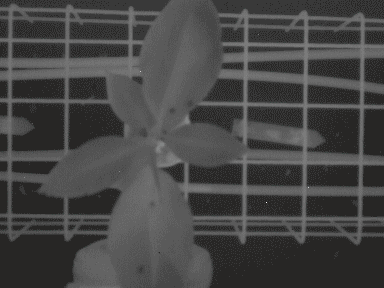This is the official implementation of:
Unsupervised Multi-Modal Image Registration via Geometry Preserving Image-to-Image Translation.

Registration output during 50 training epochs
This repository is based on the implementation of Pix2pix. We recommened getting yourself familiar with the former framework. Here we provide a basic guidline on how to use our code.
You need to implement your own dataset. The dataset should implement the template proivded by in base_dataset.py. Invoking 'getitem' of your dataset should return the following template dictionay:
{'A': tensor_image_modality_a,
'B': tensor_image_modality_b}
Where tensor_image_modality_[a/b] is the tensor of the image from modality A and modality B respectively.
The name convention use is [whatever-name-you-want]_dataset.py - this is important in order to be able to define your dataset using strings.
Here we provide a list of flags that could be used during the training of our model. The flags are categorized into
STN related flags and general training flags
- --stn_type: train an affine based registration ('affine') or a deformation field based registration network ('unet').
- --stn_cfg: you can define the network architecture via a configuration string (default is 'A'). See example configuration in unet_stn.py and in affine_stn.py.
- --stn_no_identity_init: set if you WANT to start with a random transformation.
- --stn_bilateral_alpha: the alpha value used in the bilateral filtering term (see paper).
Training related flags (beside the base flags used by Pix2Pix/CycleGAN):
- --multi_res: you can train NeMAR with multi-resoultion discriminators (similar to pix2pixHD). We believe this could be use-full when working with high-resolution images.
- --lambda_smooth: the lambda used for the regularization term of the stn.
- --lambda_recon: the lambda used for the reconstruction loss.
- --lambda_GAN: the lambda used for the GAN loss
We provide an option to write training stats using tensorboard. To enable tensorboard visualizer, you need to set the flag --enable_tbvis.
This will create a tensboard log-file in the directory "<checkpoints_dir>/<exp_name>/<exp_name>_tensorboard_logs". The tensorboard visualizer
class reports (1) mean transformation offsets in x,y direction, (2) network weights, (3) losses. These values are written to tensorboard logfile each epoch.
The following flags can be used when tbvis is enabled
- --tbvis_iteration_update_rate if you want to write in iteration resolution set --tbvis_iteration_update_rate to positive number.
- --tbvis_disable_report_offsets: set if you don't want to save the mean transformation offsets.
- --tbvis_disable_report_weights: set if you don't want to save the network weights.
If you use this repository - please cite:
@InProceedings{Arar_2020_CVPR,
author = {Arar, Moab and Ginger, Yiftach and Danon, Dov and Bermano, Amit H. and Cohen-Or, Daniel},
title = {Unsupervised Multi-Modal Image Registration via Geometry Preserving Image-to-Image Translation},
booktitle = {IEEE/CVF Conference on Computer Vision and Pattern Recognition (CVPR)},
month = {June},
year = {2020}
}
Since this repository is based on Pix2Pix & CycleGan framework - make sure you cite these two awesome papers:
@inproceedings{CycleGAN2017,
title={Unpaired Image-to-Image Translation using Cycle-Consistent Adversarial Networkss},
author={Zhu, Jun-Yan and Park, Taesung and Isola, Phillip and Efros, Alexei A},
booktitle={Computer Vision (ICCV), 2017 IEEE International Conference on},
year={2017}
}
@inproceedings{isola2017image,
title={Image-to-Image Translation with Conditional Adversarial Networks},
author={Isola, Phillip and Zhu, Jun-Yan and Zhou, Tinghui and Efros, Alexei A},
booktitle={Computer Vision and Pattern Recognition (CVPR), 2017 IEEE Conference on},
year={2017}
}